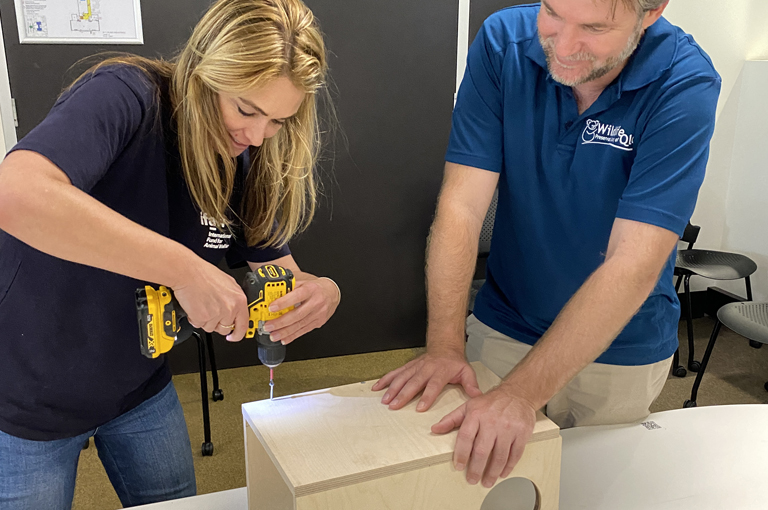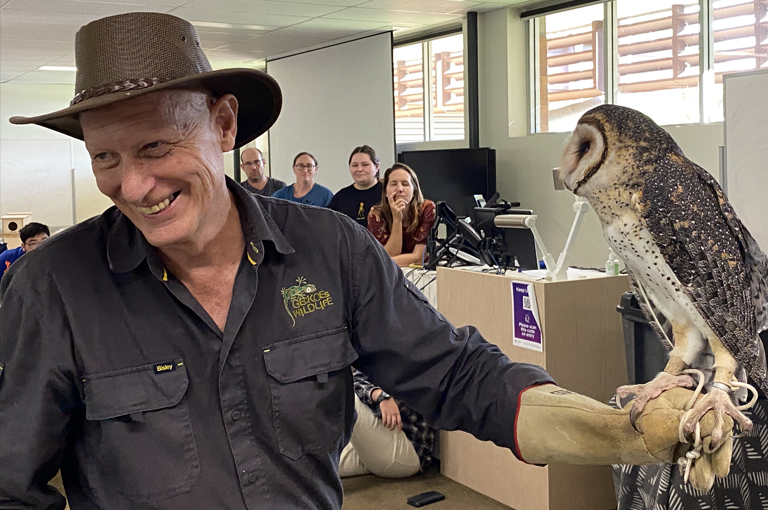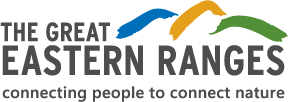
Lockyer Valley residents flocked to a greater and yellow-bellied glider workshop on 2 April at Gatton, held to encourage landholders to help conserve the threatened marsupials.
The free event included presentations by wildlife experts, a nest-box building demo, and the chance to meet some of the locals from stick insects to barking owls and bandicoots.
The workshop was run by Healthy Land & Water, Queensland Glider Network, Great Eastern Ranges and the International Fund for Animal Welfare as part of a broader effort to secure the future of south-east Queensland’s gliders.

Gary Howling, Great Eastern Ranges Chief Executive Officer, says that sadly, populations of gliders, particularly larger ones, have plummeted over the past 20 years due to loss of their habitat, forest corridors, drought and heat waves. The devastating bushfires of 2019-2020 further compounded these threats pushing the species closer towards extinction. But there is hope.
“Workshops such as these empower local communities to help collect valuable data that can be used to get a better understanding of how our gliders are faring post-fire and inform conservation efforts to help them,” he said.
Paul Revie, Queensland’s Glider Network Project Officer added, “There are simple ways people, and particularly farmers and property owners, can alleviate some of the impacts that the 2019–2020 bushfires have had on the endangered greater glider and vulnerable yellow-bellied glider in fire-affected regions. And that’s the good news we are trying to spread far and wide.”
“The Lockyer workshop brought the community together to learn how to find and identify gliders, where to report sightings, and most importantly, what each and every one of us can do to create glider-friendly landscapes and ensure the future of these unique gliding marsupials in our region.”

The workshop culminated in an evening spotlighting tour during which attendees were treated to the sight of four squirrel gliders flitting around campus.
Attendees at the workshop were invited to download a revegetation guide to help them tailor plantings and attract gliders onto their land. The guide was funded through Australian Government’s Bushfire Recovery Program for Wildlife and their Habitat.
Habitat mapping for the yellow-bellied glider and the endangered greater glider is being developed by Healthy Land & Water using vegetation mapping and remote sensing data analysis, with ground-truthing surveys and acoustic monitoring being undertaken by the Queensland Glider Network.
Healthy Land & Water Chief Operating Officer Dr Andrew O’Neill said that this work is a great example of Healthy Land & Water bringing together the science and the community.
“This mapping will be used to target areas for conservation and local population recovery,” he said.
“Ground-truthing surveys being undertaken by the community and citizen scientists are driving our science-based approach.”
“This evidence-based habitat mapping goes hand-in-hand in with community awareness and private land conservation and we’re really excited to be working with Great Eastern Ranges, the International Fund for Animal Welfare, and the Queensland Glider Network to raise awareness of this special species.”
This project is being funded through a partnership between the Great Eastern Ranges and the International Fund for Animal Welfare (Australia) as part of a broader bushfire recovery effort and has been supported by the Australian Government’s Bushfire Recovery Program for Wildlife and their Habitat.



 Media release
Media release